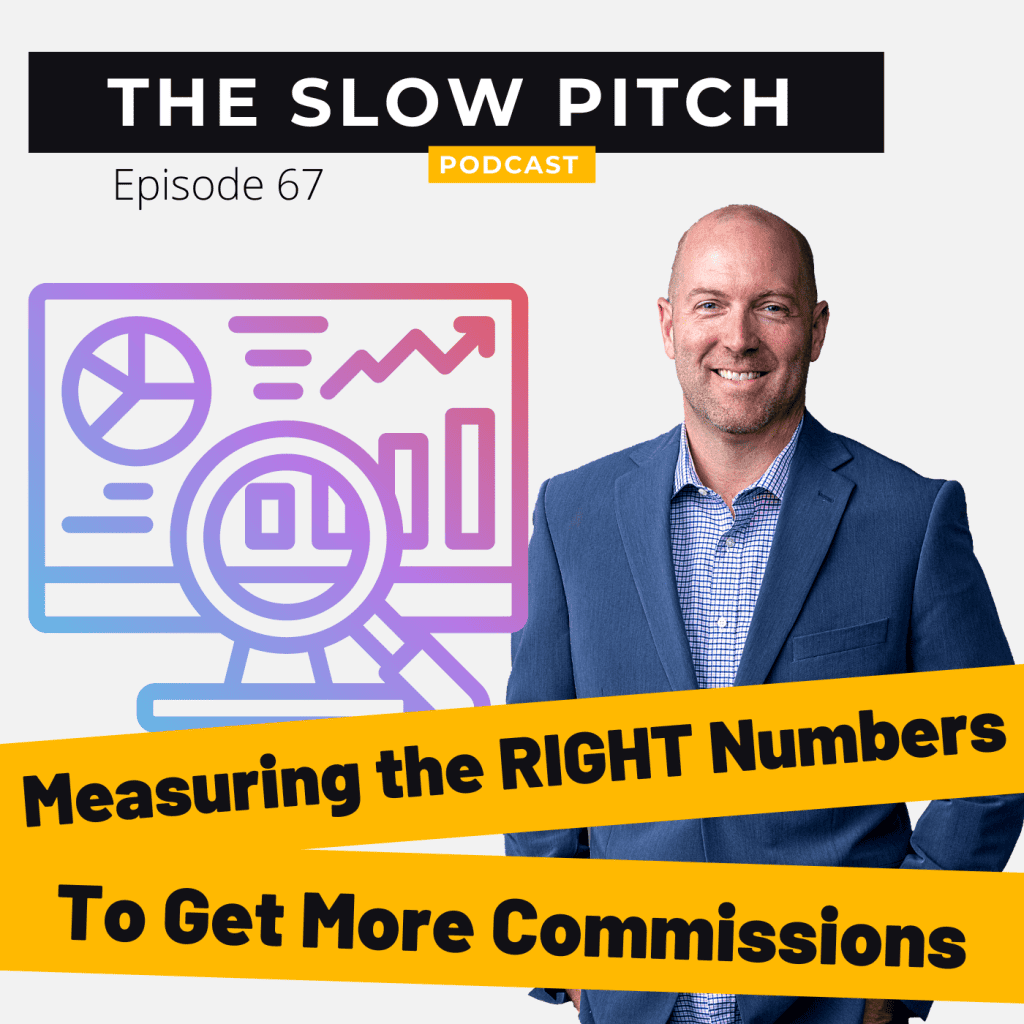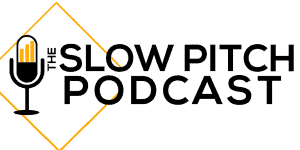5 Tips for Salespeople (pt5) – Tracking Numbers for Success


Notes
Tracking Numbers = Success!
Whether you like it or not, you need to start tracking your numbers. Most people know it inherently, but do not like to do it. If you’re going to be successful in sales, you must start tracking your numbers. The premise is this: If you want a certain number of sales, how many calls, meetings, etc. do you need to get to that number of sales. This sounds like I’m saying it’s a numbers game…and it kind of is. The goal isn’t to get through a certain numbers, the goal is to do a certain number of purposeful tasks (meetings, calls, etc.) to get you to that goal.
When you know you need to hit a goal, the first thing you need to do is break it down into smaller tasks. What do you need to do first, second, third, etc. Once you know this, you’ll want to execute it. That’s what tracking numbers means. It’s not so your boss can get you in trouble. It’s not so you can feel bad. It’s not so you can lose your job. It’s so you can succeed.
If you’re looking for direction on how to create this or what this means, listen to this episode to help you understand how and what you should be tracking and how to use it.
Outline:
NOTE: Some links may be affiliate links, which means we get paid a commission when you purchase, but it the cost remains the same for you.
Music: "Clydesdale Funk" by Cast of Characters, written by: Dustin Ransom.
The Episode
Rob 00:08
Welcome back, everybody to The Slow Pitch. And we are on part five of the top five tips for salespeople. And again, this is for beginners, intermediates, it almost doesn’t matter, we’re gonna get into some topics on this episode that will help you understand what you need to be doing. And we’ve already talked about several things. But we’re going to be talking about numbers today. And sometimes these are fun things, and sometimes people hate it. So let’s get started.
V/O 00:33
You’re listening to The Slow Pitch Podcast, a podcast about selling less and closing more.
Rob 00:41
All right, so today is gonna be about numbers. And I’m gonna get into these numbers here thing and you know, some of you are gonna be like, I don’t want to do this, this is going to be one of those things that is going to be most effective for you. If you’re struggling with deciding whether or not you’re doing some of the right stuff.
Rob 01:00
And if you’re if you feel like you’re not in the business of sales, and should not be because you just feel like you’re not making any headway. I want you to try this for the next 30 days, and see if this makes any impact. And it might take you a little longer if you have a longer sales lead or a sales cycle. So if it’s a longer sales cycle, give it 90 days and see how this works.
Rob 01:19
Okay, here’s what I want to talk about, it’s going to be about tracking the activities that you should be doing. So let’s kind of dig into some of that. So what are the things that you should be tracking so that you know whether or not you’re doing things the way you’re supposed to be doing? And all the quantity of things that you’re supposed to be doing? by that? I mean, how many calls do you need to make, if you haven’t calculated out how many calls you need to make each week each day already, I want you to stop the episode and I want you to write down your sales goal for the year.
Rob 01:48
I want you to take that number. And then I want you to divide that by what is your average sale look like? So a good example, if your sales goal is a million dollars for the year, and your average sale is about $50,000 plus or minus, you just divide those two numbers, you need 20 sales for the year, do you know where you are, as you go through month three, for how many sales you’ve completed and how many you haven’t completed.
Rob 02:15
Some of you are an organization where they track that for you and you know where you’re at. Some of you are on your own. And this is where it becomes really important. track that number, how many sales do you need to close based on here’s how many dollars that you need to have. And here’s how many the average sale is divide that out. Now, that number is nice. That is not the most important number that you’re going to follow.
Rob 02:38
Here’s what I mean, you now know you have to have 20 sales. Now I want you to think about how many calls, how many meetings? How many different ways of getting to that closed sale does it take so I want you to start to think about do you have to go to certain number of networking events? Do you have to make certain number of cold calls? Do you have to have introductions? Do you have to have referrals? Do you have to go to trade shows those types of things?
Rob 03:00
How many of those into individual items does it take to get to those 20 sales hopefully have been doing this for a little while, you should have an idea of what that is, if you don’t figure out what are the things and activities that you could be doing to get sales and track what’s working what’s not if you know that if you network in a specific industry in a specific association meetings that they do every quarter or every month, and that seems to get you the most leads and those leads, then convert into meetings and those meetings convert into next meetings.
Rob 03:27
those meetings come into sales. At some point, that’s probably where you should be focusing your efforts track it, you have to build a sales spreadsheet that’s going to track all that stuff, how many sales calls? How many conversations do you need to have before you have a warm prospect? How many networking events do you need to attend? That could be industries trade shows, it could be associations, it could be all kinds of different things that you could do?
Rob 03:49
How many conversations that are really, really meaningful, meaning you’ve gotten into those pain questions that we talked about in part four, how many of those meetings have you had before you have a really solid lead? And they’re working their way towards the last step, which is getting the estimator proposal written, reviewing that and making the sale? How many does that take? Are there a certain number of business meetings or appointments that you need to have?
Rob 04:14
What if you have referral sources that you can meet with? How many of those meetings do you have to just remind them who you are what you do? What you’re looking for this month, this quarter this year, this this week? How many times can you do that? And are they willing to do that with you? How many strategic partners do you have that are unlike industries, but don’t do the same thing you do? How many LinkedIn connections? Do you need to make all those questions?
Rob 04:36
There’s probably a hundred other questions you could ask about what are the ways you can get your business in, think about all the ways that you can produce leads and get leads besides a list that’s handed to you that you can call and then it’s just your cold call list, right? That’s the number of cold calls, how many other items can you track so that you know what it takes to get to your 20 sales that’s gonna get you to your million dollars for the year and those just using those numbers. Right, given that on a spreadsheet, you should be tracking how many you’re doing each week.
Rob 05:04
It should almost reflect a funnel, it should work its way through that you’re going to do networking, you’re going to attend different events, you’re going to go to trade shows or expos, you’re going to have to do LinkedIn connections, you’re gonna have to cold call all those things. That’s a type of funnel stuff, right? But then once you have that, how many of those convert to a potential new opportunity where you then can have a initial conversation with them, and that you actually have that conversation, and that you have a meaningful conversation that should be tracked.
Rob 05:33
That means they’ve had a pain conversation that you understand what they’re working towards, what their problems are, and how many of those have converted to the next level, which is really getting to that budget questions and understanding who’s involved in the decision making and all that kind of stuff.
Rob 05:46
Those meetings are another piece that you could track, how many past clients have you reached out to talk to and said, hey, you know, we worked together last year, we did a lot of different things that were really cool and I feel like we made some good headway…can you think of anybody that might be interested in talking to us that you guys know, maybe have a vendor that could use our help? I’m just kind of curious, have you done any of those? Are you tracking those?
Rob 06:09
And then you have the referral partners start tracking those people, they’re further down in the funnel, because they’re much warmer of a lead. And they’re easier and quicker to move through the funnel, right? So do you have people like that, you know, those past clients that you talked to the same type of thing, they would be warmer as well, right?
Rob 06:24
Once you get through all of that, you start tracking that now you’ll start to understand whether or not you’re making headway or you’re not making headway. And when you start tracking, you become focused. And the more focused you are, the more that you’re doing the stuff that you’re supposed to be doing. You should be writing these numbers down and be very happy, it should make you happy inside to write a hash mark or a number down to say I did this many calls, I did this many meetings this week, I did all these things that are going to drive me business.
Rob 06:52
Because what you’re doing with those numbers are going to drive sales later. And if it’s a 30 day sales window, or a 90 day sales win, or a six month it doesn’t matter, what you’re doing is filling your bucket up. So that much later down the road, you’re going to be I don’t even know how all these leads came in to me, I don’t know where these look at these people that are asking me for, but you’ll know because you track them. If you do all those activities, and track what works and what doesn’t work. When you get to the end, it will make a huge difference in the results.
Rob 07:21
And I guarantee you you’ll be happier with the leads that you have the stuff that you’re working towards. And you’ll be getting closer to your sales goal probably sooner in the year than what you were expecting. I would also add in to this list of things that you’re going to track journaling, I would write down how many times I journal that week to here’s the things that I needed to do or should have done better to remind yourself I would also track in how many times have you exercise this week?
Rob 07:47
Because if you haven’t exercised in two weeks, you should probably get out there and move around a little bit right? track that. Because everything that you did, there’s an old man management adage, right, what you track gets done. So when you track these numbers, you will do the activities and do the things that you should be doing to get to your goal, track your numbers. So now that you’ve had all five of these parts,
Rob 08:09
I hope they’ve helped. I hope they refocus you on some of the things that should have been focused on or just reminds you of, oh, yeah, I’m doing this the right way. These five things, these five tips that salespeople should be doing are, to me, they’re a little basic, but they’re also easy to just not do because they’re tough, they’re not easy, and it’s not easy to stay focused on those types of things. I would love to hear from you. Were these things helpful. Are these five things that I listed out these five episodes? Were they helpful? And do you want more? Until next time, slow down and close more?
V/O 08:45
Thank you for listening to The Slow Pitch. Do you have a question about sales? Call or text your question at (608) 708-SLOW. That’s (608) 788-7569. Or you can email them to Questions@TheSlowPitch.com. Slow Down and Close More.
Rob 09:35
Thanks as always, for listening today. If you’d like this podcast, please subscribe and leave us a review. We really appreciate it. Follow us on Twitter, Instagram and Facebook at The Slow Pitch. We were mixed today as always by Johnny Polakis. And we were produced by High Gravity Studios. Music credits and other notes are in the show notes section on TheSlowPitch.com and we’ll be back with another episode soon.








